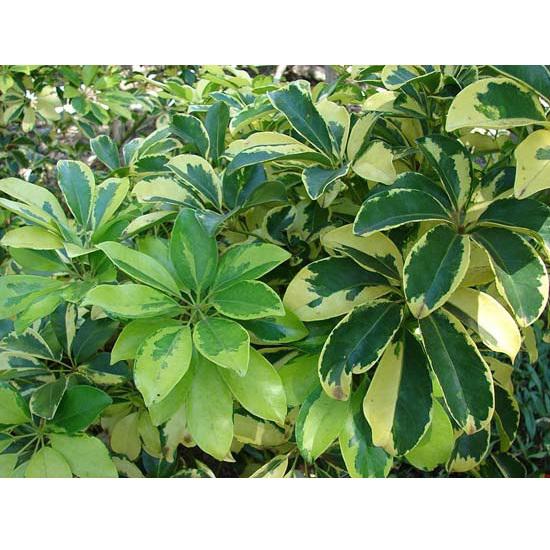Latin name: Heptapleurum arboricola
Family: Araliaceae
Did you know that this plant was virtually unknown until the middle of the 20th century? It is a wonderful, hardy plant that grows very easily and requires very little care. Its foliage is glossy, with a dark green elliptical shape. In the panache varieties, the leaves are bicoloured, dark green and light green-yellow. The leaves grow on soft stems and can be said to resemble fingers. If the top is cut off early, the plant will branch out and become more tufted. Otherwise, the plant can grow up to 3 metres in height.
Light – Position – Temperature
It requires at least 2 to 3 hours of light a day, but not direct sunlight. One way to check whether the plant is getting the light it needs is to observe its leaves. In case they come out strangely long, then we should change the position. Like most houseplants, they need to be protected from drafts, cold and heat sources. The plant thrives at temperatures between 15 and 21 degrees Celsius. Sephora loves moisture, which we can achieve by filling the saucer with gravel, filling it with water and placing the pot on top of it.
Watering – Fertilization
Sephora needs moderate watering. Leave about 2.5 cm of the potting soil to dry out before watering again. It is important that the soil does not dry out more than 2.5 cm, but it is also important not to overwater it. A good tip is to spray the plant often with water. Fertilizer can be used every two weeks from spring until the end of autumn. In any case, however, a good root system must be developed in order to proceed with fertilization.
Enemies – Diseases
One of the diseases that affects the Sephora is Pseudococcus. It usually attacks large plants that have dense foliage. In this case, spray well with insecticide or wipe with a wet sponge with methyl alcohol. Sometimes you may see yellow spots on the leaves at the top of the plant. We may also notice aphids on the young leaves, which can be easily removed with insecticide. If the plant is in a hot and dry environment it can be attacked by the red spider mite. We can often check the underside of the leaves with a magnifying glass if we notice that the plant has brown leaves, in which case we again use an insecticide.

